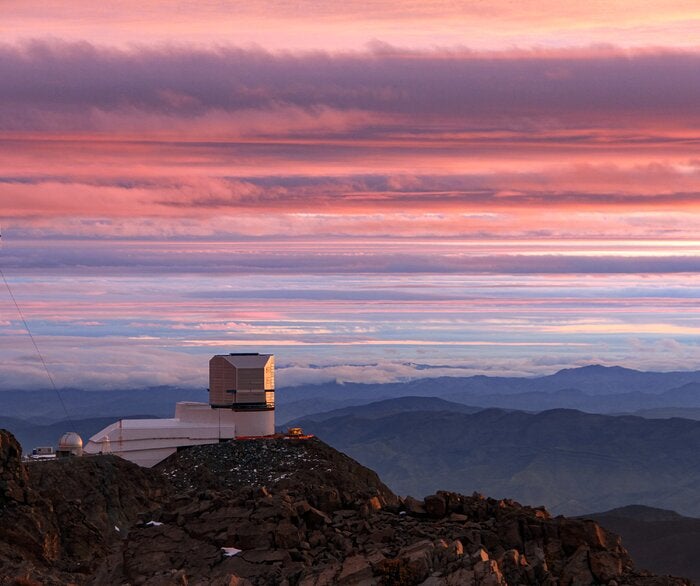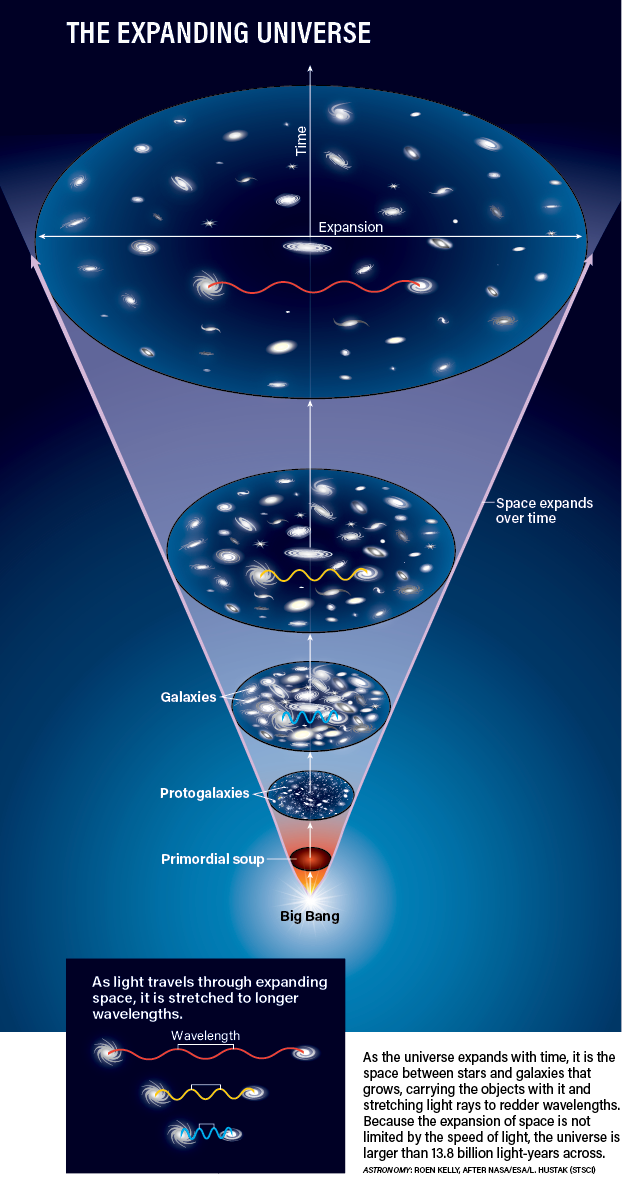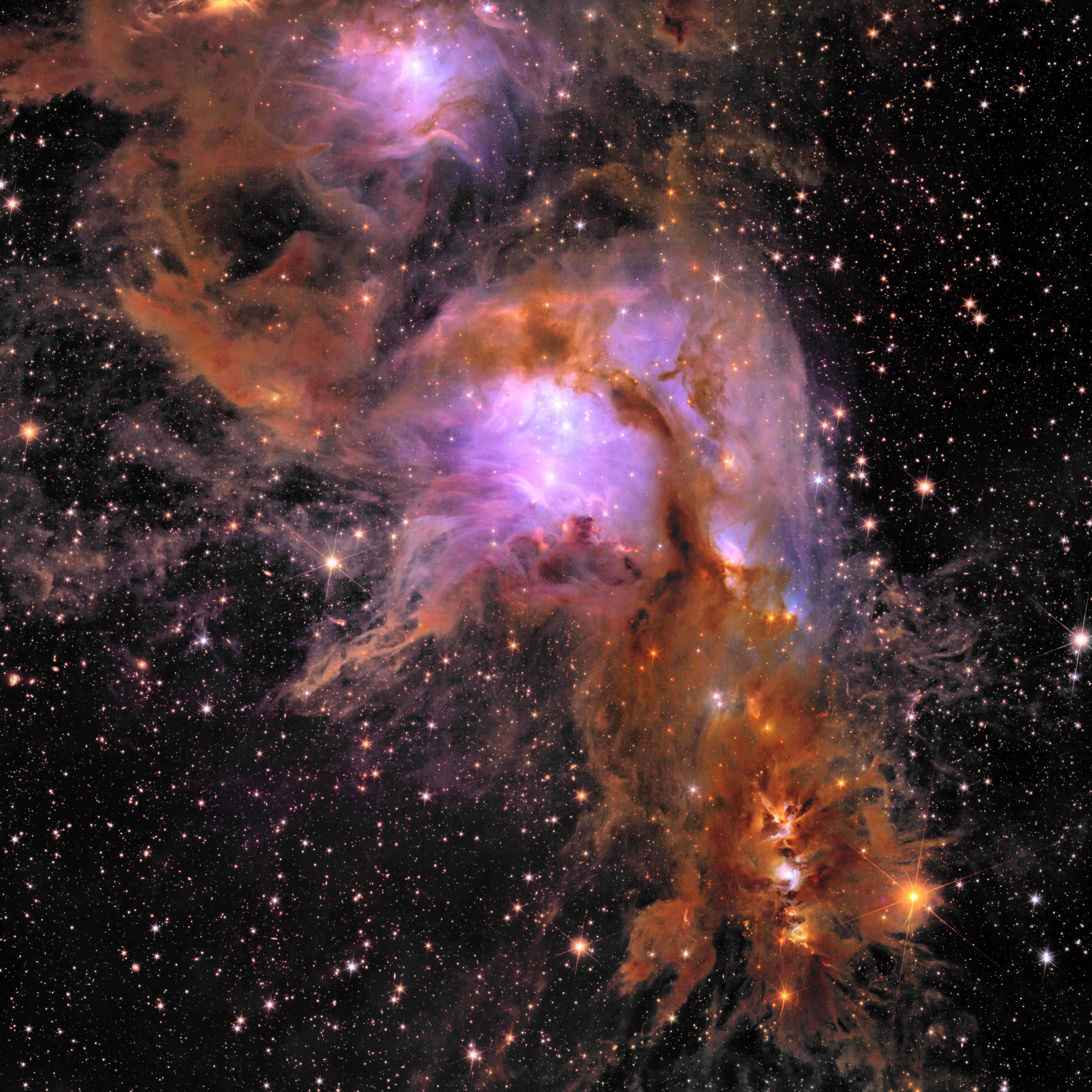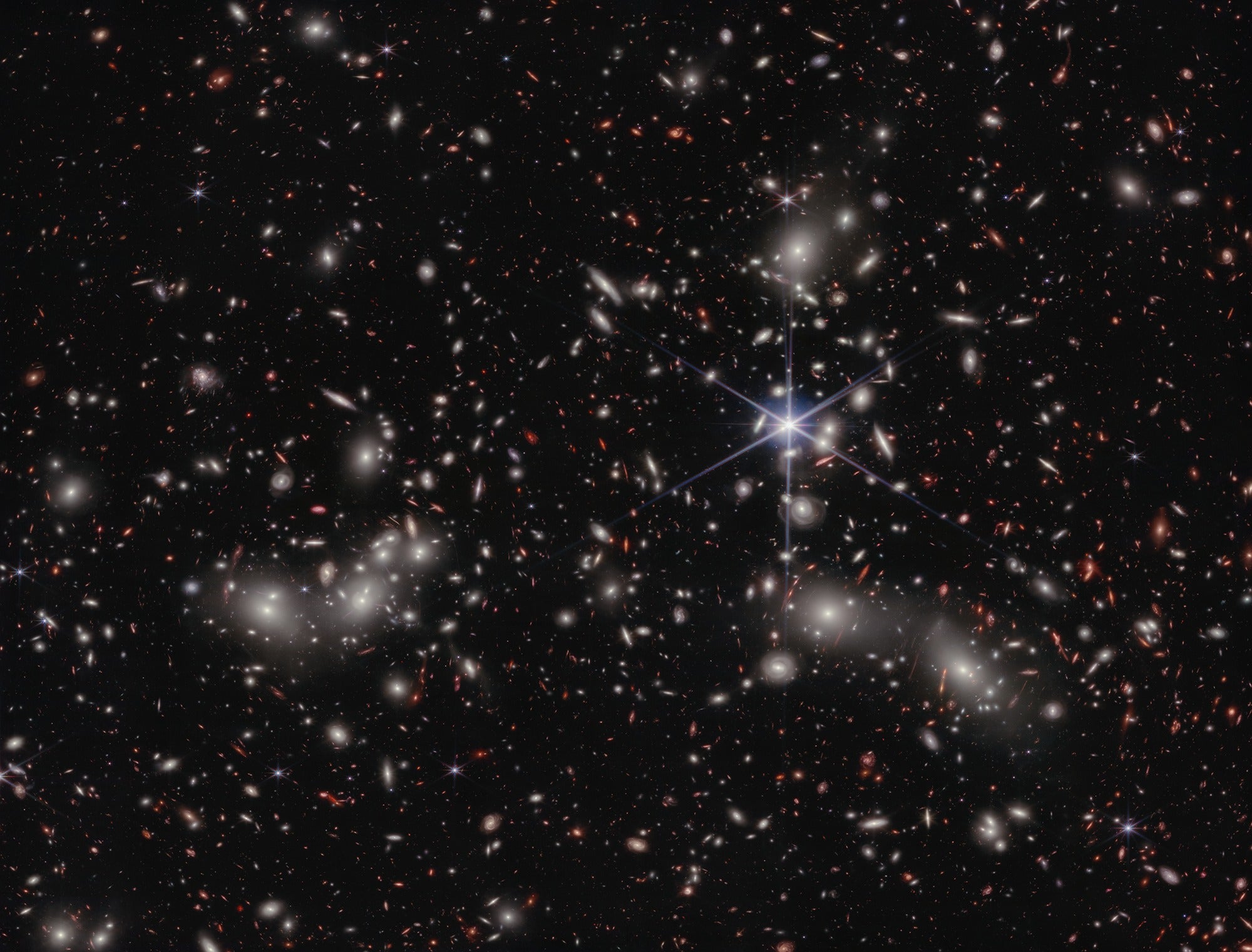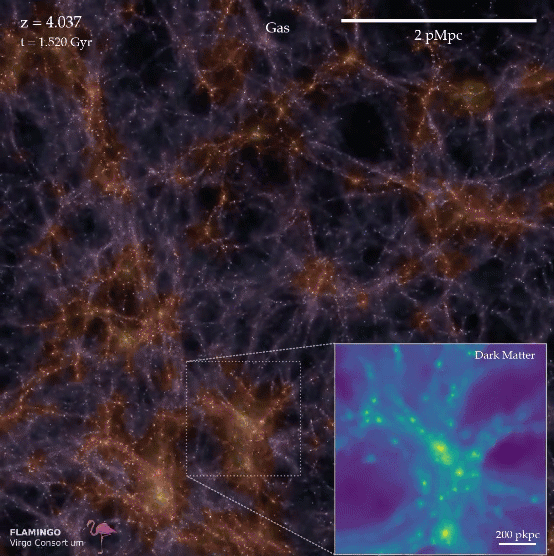
The dynamical dance of physics can entrance — as the latest supercomputer models of the cosmos demonstrate. Dubbed FLAMINGO, the set of simulations captures the emergence of the structure of the universe. Starting from the featureless expanse right after the Big Bang, the model traces how gravity draws matter together, forming filaments and clusters of galaxies until a picture emerges that resembles the present-day universe.
The simulations were developed by the Virgo Consortium, an international collaboration that has been working on such simulations since it was founded in 1994. The new work was published Oct. 5 in a trio of papers in Monthly Notices of the Royal Astronomical Society.
The main frame of this video shows the movement of gas in one region of FLAMINGO’s simulated universe, with whitest and brightest being the hottest and densest gas. The inset focuses on a large cluster of galaxies as it develops, displaying the dark matter in the simulation. Credit: Yannick Bahé, the FLAMINGO team and the Virgo Consortium
The Virgo team was also behind the groundbreaking Millennium Simulation published in 2005, then the largest gravitational simulation of bodies ever — tracing the dynamics of a model universe more than 2 billion light-years on a side containing 10 billion particles.
The most detailed FLAMINGO simulation is an order of magnitude larger: It takes place in a volume of space over 9 billion light-years on a side filled with 300 billion particles, each the size of a small galaxy.
But it’s not just the sheer size of the simulation that makes FLAMINGO unique. It also incorporates the effects of both dark matter and normal matter.
Often, previous simulations (including the Millennium Simulation) have focused purely on dark matter, the invisible stuff that scientists think makes up around 85 percent of the matter in the universe. This is computationally convenient, because according to theory, cold dark matter barely collides (or interacts), meaning it can be modeled purely through gravity.
But it turns out that normal (or baryonic) matter — despite only making up 15 percent of the stuff in the universe — can’t be ignored. For instance, the supermassive black holes at the centers of galaxies feed on normal matter, allowing the black holes to generate magnetic fields that fire matter back out into the void. These winds collide with intergalactic material, which, in turn, affects the growth of new galaxies. This means that cosmologists have to incorporate fluid dynamics into their simulations — a computationally intensive realm of physics — and FLAMINGO is the largest to do so.
Resolving tensions in how the universe expands
FLAMINGO also includes the effects of dark energy, the unknown source of energy that is causing the universe’s expansion to accelerate. Cosmologists use simulations like FLAMINGO to test their theories, tuning simulation parameters to find out which values generate universes that resemble what astronomers see today.
Some of the most intriguing cosmological results in recent years have emerged when those values don’t match observations. The most famous example is the so-called Hubble tension, a discrepancy between predictions and observations of the Hubble parameter, which describes how quickly the universe is expanding.
FLAMINGO has already helped researchers investigate a second issue, called the S8 tension. In the standard model of cosmology, S8 is a parameter that describes how unevenly distributed matter is in today’s universe. The value that astronomers have observed by studying how matter bends (or lenses) light is slightly lower than predictions. Apparently, matter is less clumpy in the universe than predicted — or, in other words, our simulations are missing something that appears to prevent matter from clumping together over time.
Naturally, the team wondered whether that something might be the effects of ordinary matter, as modeled by FLAMINGO. But the team’s initial analysis of FLAMINGO results suggests that the effects of ordinary matter are not enough to account for the S8 tension, leaving it an open mystery.
“Cosmology is at a crossroads,” said Carlos Frenk of Durham University in the U.K. in a statement. “We have amazing new data from powerful telescopes, some of which do not, at first sight, conform to our theoretical expectations. Either the standard model of cosmology is flawed or there are subtle biases in the observational data.”
Those powerful telescopes include NASA’s James Webb Space Telescope (JWST), which recently took data that confirms and deepens the Hubble tension. Astronomers will need observatories like JWST and highly detailed simulations like FLAMINGO working in concert to resolve these conflicts in the standard cosmological model — or develop a new one.




